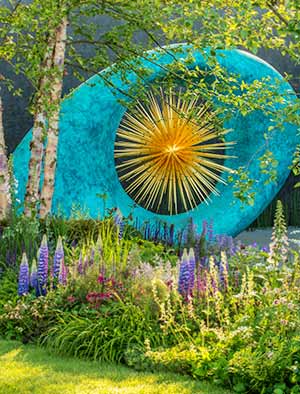Bronze

Geminus

Mantle II

Armillary Spheres
![Dynamic 3D wall panels in verdigris bronze backed by gold leaf]()
Terra
![Quill sculpture poised on a lawn with flowers behind]()
Quill
![Verdigris bronze Hydra among flowers]()
Hydra
![Armillary 30 sundial]()
Armillary 30
![Mimeo Cascade as the focal point of a classically styled garden]()
Mimeo Cascade
![Nyneve large and striking outdoor art arising powerfully out of a pond]()
Nyneve
![Aeon monumental sculpture set against delicate, pretty planting]()
Aeon
![Bench of Contemplation in a classic garden]()
Bench of Contemplation
![Luna Mantle as the focal point of an Arab garden]()
Luna Mantle
![Matrix sculpture in grass]()
Matrix
![Three tiered Crucello fountain as a garden centrepiece]()
Crucello
![Bud sculpture on a plinth]()
Bud
![Mirage mirror set in the wall of a plush sitting room]()
Mirage
![Eveque garden sculpture on a lawn]()
Eveque
![Blagrave Dial]()
The Blagrave Dial
![Verdigris bronze sphere water feature lined with gold leaf]()
Water Mantle
![Ekho water bowl in a pond]()
Ekho
![Water spurting from a Mimeo water bowl]()
Mimeo
![Volante water feature in a flowery garden]()
Volante
![Filigree water wall with verdigris bronze patterned surface backed by reflective stainless steel]()
Water Walls
![Two curved Lattice water walls glowing in a small pond at dusk]()
Lattice Water Wall
![Atlas bronze sculpture supporting an armillary sundial]()
Atlas Sundial
![Verdigris bronze waves set in a framed stainless steel water wall]()
Bronze Wave Water Wall
![Filigree water wall as a classic garden focal point, fronted by a trickling rill]()
Filigree Water Wall
![Brass horizontal sundial set in a stone plinth]()
Horizontal Sundials
![Lattice wall sculpture inside]()
Lattice
Bronze Garden Sculpture
A Noble and Historic Metal
Bronze is easy to work with, malleable and forgiving. It melts at relatively low temperatures so is easy to cast. At the same time, it is very strong. For these reasons, sculptors throughout history have loved to work in bronze. This lofty past means bronze artworks have come to be understood as refined and distinguished. “Sculptures in bronze – outdoors or indoors – are instantly recognizable as noble and historic pieces” says David Harber.
Show more
Long Lasting
In the right conditions, bronze is very durable. A few environments do not suit bronze. Chlorinated water, for example, regularly covering a bronze sculpture will corrode the protective patina – whether natural or created – and then the bronze itself. Such adverse conditions are unusual, however, and David Harber will always advise you if bronze is unsuitable for your location.
Patination
Patination is the production by oxidization of a protective, coloured film on the surface of some metals, including bronze. Left to itself, bronze naturally develops a dark greenish patina. The addition of certain chemicals however enables patinations in a broad range of natural looking colours. Bronze patination is also very stable, holding its colour and texture without degradation for many years.
Almost all of David Harber's bronze garden sculptures are patinated. Pure, polished bronze sculptures need to be regularly maintained in order not to lose their lovely dull gold colour relatively quickly when contact with the outside world sets off the oxidization process.
A bluey-green patination is a favourite with David Harber, as seen for example in the popular Mantle and Geminus garden spheres. “A blue-green patination works so well in gardens. It harmonizes with the natural environment”, explains David Harber. An antique tan patination is another option.
Show less



























